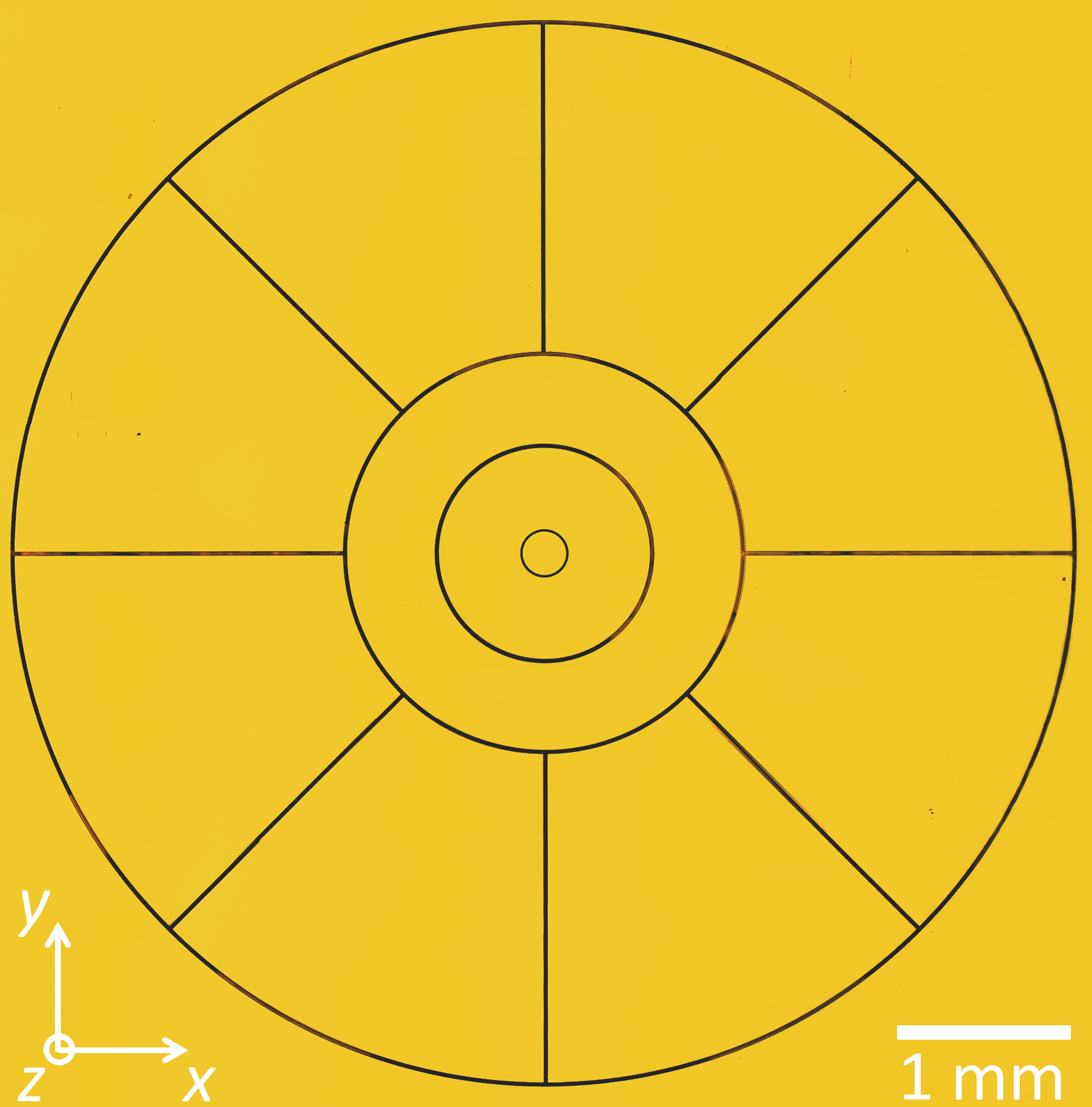Ion Ring Trap
The Platform
This ion trap features a unique geometry among surface ion traps – three circular electrodes in the center create a highly circularly symmetric potential, allowing ions to be trapped in a ring. This symmetry offers numerous possibilities, such as ion crystals with perfectly even spacing and no edge effects. These features can be exploited to simulate quantum systems with periodic boundary conditions, in which one can study effects such as quantum friction and quantum phase transitions of a one-dimensional periodic crystal. The rotational symmetry of this system also makes it a great platform to study and control one of the most conceptually simple quantum systems: the quantum rotor. For more information see PRL 118, 053001 (2017).


Right: Camera images of eight ions in the ring trap, with various values of an intentionally applied homogeneous electric field in the horizontal direction. As the field is relaxed, the ions delocalize and their fluorescence spreads across the extent of the ring, demonstrating the high degree of symmetry of this system. The diameter of this ion ring is 90 μm.
Current Projects
Coherent control of a quantum rotor by light carrying orbital angular momentum
Using the ring trap we have realized a quantum rotor system, which exhibits quantized angular momentum. It consists of just a single pair of ions that can freely rotate about each other. Using laser light incident at a slight angle from the normal to the rotor plane, we can impart angular momentum onto the rotor and create superpositions of these quantized angular momentum states. See PRL 123, 133202 (2019) for more information. This technique however, which uses a plane wave of light, is limited in how much angular momentum can be transferred. We aim to implement a more sophisticated method in which light with a phase gradient in the angular direction can carry an arbitrary but controllable angular momentum to impart onto the rotor, offering more control and allowing the creation of more interesting rotor states.
Demonstration of indistinguishability by direct particle exchange
The symmetrization postulate of quantum mechanics requires that the state of a system of two identical quantum particles obey exchange symmetry, in which the multiparticle wavefunction is unchanged under an exchange of the two particles if they are bosons, and acquires only a minus sign under this exchange if they are fermions. This symmetry erases the distinct identities that this pair of particles would otherwise have, and has a wide range of implications that have been observed in many different ways over many decades. We aim to demonstrate this by using our quantum rotor to exchange a single pair of 40Ca+ ions by using a superposition of different angular momentum states, thus directly interfering them with each other.



